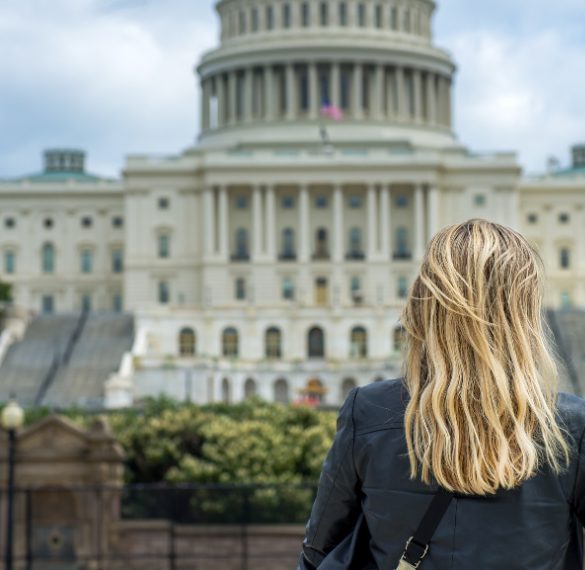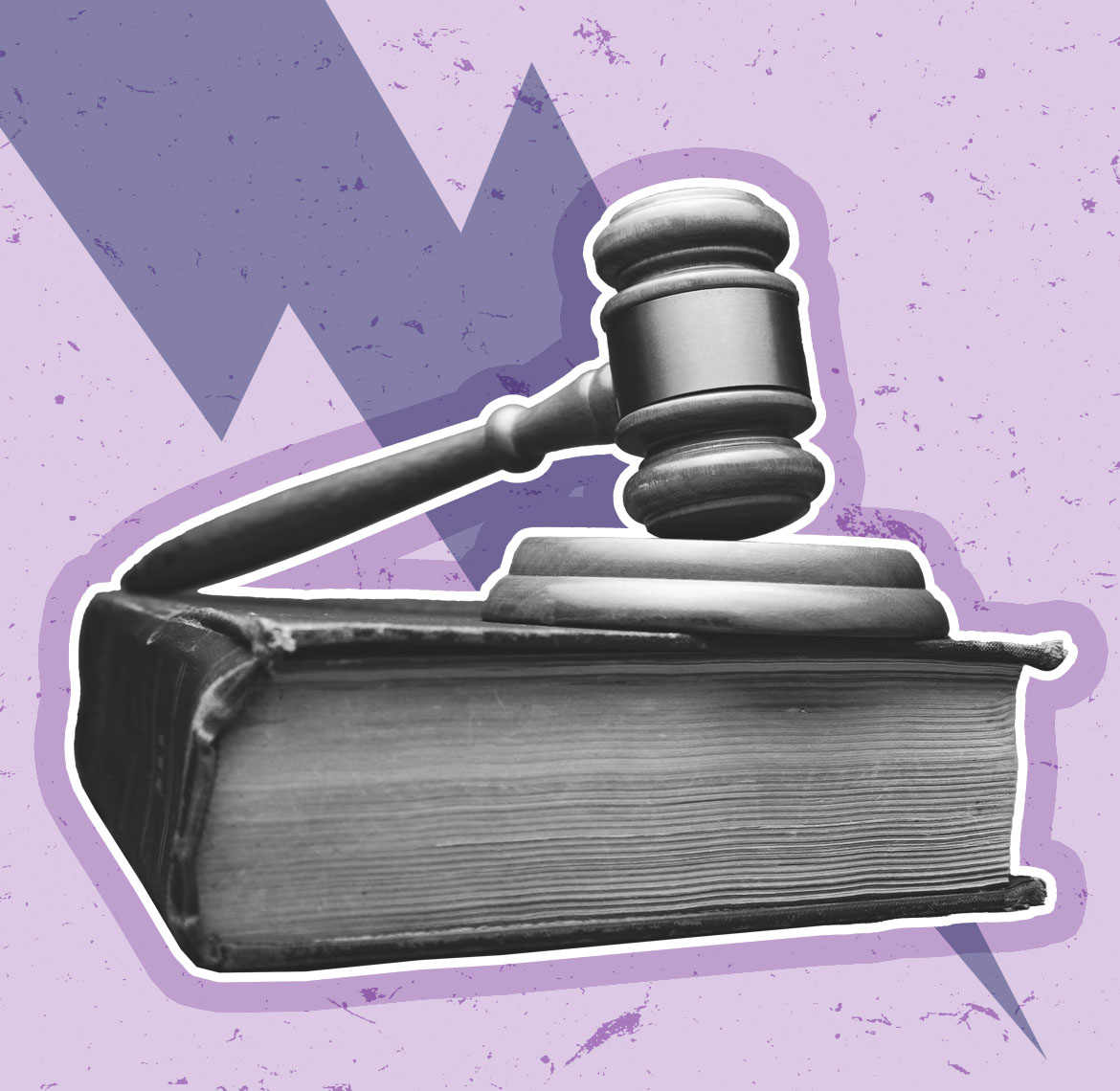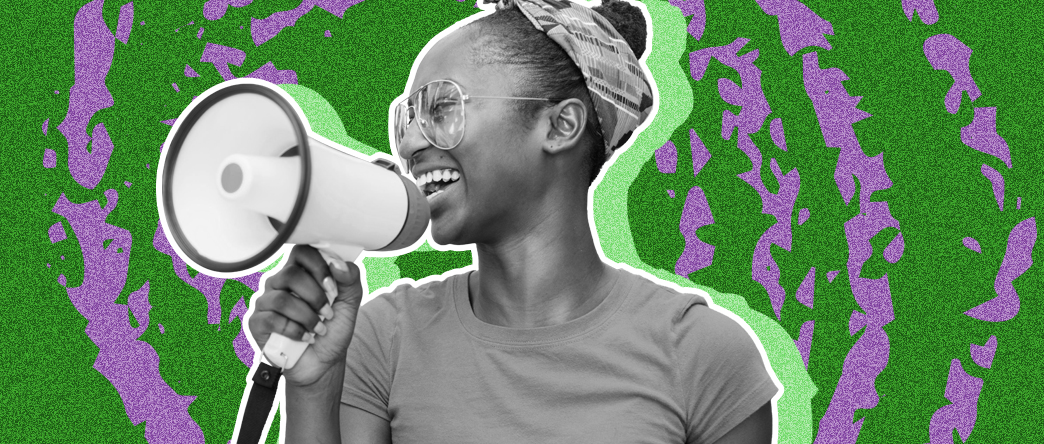Policy & Justice
RAINN advocates for legislation that prevents harm, protects victims, and ensures perpetrators are held accountable.

Our bipartisan partnerships with U.S. lawmakers help create, advance, and pass legislation that strengthens protections for survivors and holds offenders accountable.
For Legislators
Explore RAINN’s issue briefs—everything you need to know to create and pass meaningful anti-sexual violence legislation.

Issues We’re Tracking
RAINN stays closely connected to policy developments across the U.S. These are just a few of the issues we work on every day
Accountability for Perpetrators
RAINN advocates for laws that hold perpetrators accountable and prevent continued harm. Our work in this area includes:
Child Sexual Abuse Material (CSAM)
RAINN’s supports legislation that modernizes laws to keep children safe online and hold offenders accountable. Learn more.
Intimate Material & Tech-Enabled Sexual Abuse
RAINN advocates for stronger digital protections against online exploitation, harassment, and abuse. Learn more.
- Tech accountability for software, providers, and platforms
- Sextortion; nonconsensual distribution of intimate images
- Deepfakes; AI-generated and -manipulated intimate images: Explore the issue brief
Protection Against Perpetrators
- Protective orders
- Digital tracking of victims’ physical locations
- Termination of rapists’ parental rights
Abusive Litigation
- Defamation; privileged communications
- Nondisclosure; forced arbitration
- Defense subpoenas; deposition of victims
Sexual Offenses
- Consent
- Incapacitated rape; voluntary intoxication
- Marital rape; spousal rape
- Rape
- Sexual offenses
- Child sexual abuse (CSA)
- Mandatory reporting
- Immunity for trafficking survivors
- Crimes by trusted persons; physician misconduct; custodial abuse
Physician Sexual Misconduct
- Disciplinary actions against physicians
- Involuntary pelvic exams: Read the issue brief
- Background checks; license lookup
- Physician disclosure of sexual misconduct or conviction
- Medical chaperones
Post-Sentencing
- Sex offender registry
- Post-sentencing conditions for sex offenders
- Second-look sentence modification
- Restitution
Support & Services
Everyone impacted by sexual violence deserves support. Our work in this area includes:
Statutes of Limitations
RAINN works to eliminate time barriers that prevent survivors from seeking justice. Learn more.
- Criminal SOLs: Explore the issue brief
- Civil SOLs: Explore the issue brief
- Revival or lookback windows for civil SOLs
- DNA exceptions
Victim Resources & Rights
- VOCA funding
- FMLA laws
- Restitution
- Victim Rights in Court (formerly Marsy’s Law)
- Guardians ad litem
- Survivor Bill of Rights
- Lease terminations
Securing the Crime Victim’s Fund
RAINN works to ensure that victims of crime receive financial assistance through state-based compensation programs and victim service organizations. Learn more.
Additional Support & Services Work
- Appropriations advocacy
- Federal victim support bills
- SANE access to federal programs
- Department of Education work related to Title IX and the Clery Act
Reporting to Law Enforcement Agencies
RAINN works to improve the reporting process for survivors. Every victim who chooses to report should be able to report safely and without intimidation. Our work in this area includes:
Sexual Assault Forensic Exam (SAFE) Kits; Rape Kits
- SAFE kit audits
- SAFE kit tracking systems
- SAFE kit testing
- SAFE kit retention
- Survivor access to SAFEs and SANEs
- Sexual Assault Kit Initiative (SAKI): payments and access
Education
- Sexual Violence Prevention Education (formerly Erin’s Law)
- Title IX: School notifications of support and rights
- Title IX: Disciplinary process
Investigations & Arrests
RAINN advocates for the accurate and timely identification of perpetrators, and we work to ensure investigators apply transparent and trauma-informed approaches. We advocate for state resources that promote fair and impartial investigations. Our work in this area includes:
Trauma-Informed Training
- For law enforcement professionals
- For criminal justice professionals (judges, guardians ad litem, more)
- For educators, medical professionals, others
- For MDTs (multidisciplinary teams) and SARTs (sexual assault response teams)
Sexual Assault Forensic Evidence (SAFE) Kits
- Auditing
- Tracking
- Testing and retention
- Survivor access to SANEs and SAFEs
- Sexual Assault Kit Initiative (SAKI): payments and access
Prosecutions & Convictions
RAINN advocates for fair and timely prosecutions and convictions by decision-makers who are not limited by rape myths. We work to ensure that victim witnesses are treated with respect and able to testify without intimidation. Our work in this area includes:
Trauma-Informed Training
- For investigators
- For criminal justice professionals (judges, guardians ad litem, more)
- For educators, medical professionals, others
- For MDTs (multidisciplinary teams) and SARTs (sexual assault response teams)
Evidence
- Evidence admissibility
- Other acts evidence
- Out-of-court testimony; statements by victims
- Other acts, including prior bad acts
- Rules of evidence
- Immunity: Explore the issue brief
Post-Sentencing Penalty & Accountability
RAINN works to ensure that appropriate penalties are applied and that all opportunities for victim reparations under the law are exhausted. Our work in this area includes:
- Sex offender registry
- Post-sentencing conditions for sex offenders
- Second-look sentence modification
- Lawfully-owned DNA

Federal Legislation
We work tirelessly to help Congress pass meaningful anti-sexual violence laws. See the RAINN-endorsed federal laws promoting prevention, healing, and justice.
State Legislation
Explore RAINN’s state legislative wins against sexual violence. Discover the laws promoting prevention, healing, and justice, and join our fight for justice.

10,225
RAINN reviewed over 10k state and federal bills in 2024, earmarking over 350 for ongoing tracking.
21
U.S. lawmakers passed 21 RAINN-endorsed bills in 2024, establishing 16 new state and 5 new federal laws.
100%
RAINN secured overwhelming bipartisan support for every bill we endorsed in 2024.
Laws in your state
See how each state’s laws measure up on issues like CSAM, rape kit processing, and reporting protections.
Policy Updates
Statement from RAINN on Epstein Survivors Speaking Out on Capitol Hill
Dress Codes Can Help — or Hurt. Here’s How Schools Can Get it Right.
Grok’s ‘Spicy’ AI Video Setting Will Lead to Sexual Abuse
Join Our Community
Join the Fight for a World Free from Sexual Violence
Sign up for inspiring stories, important updates from RAINN, and tools to take action in your community.

